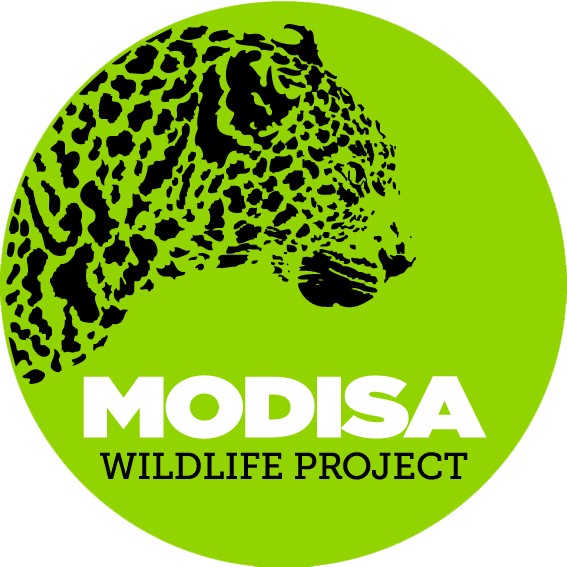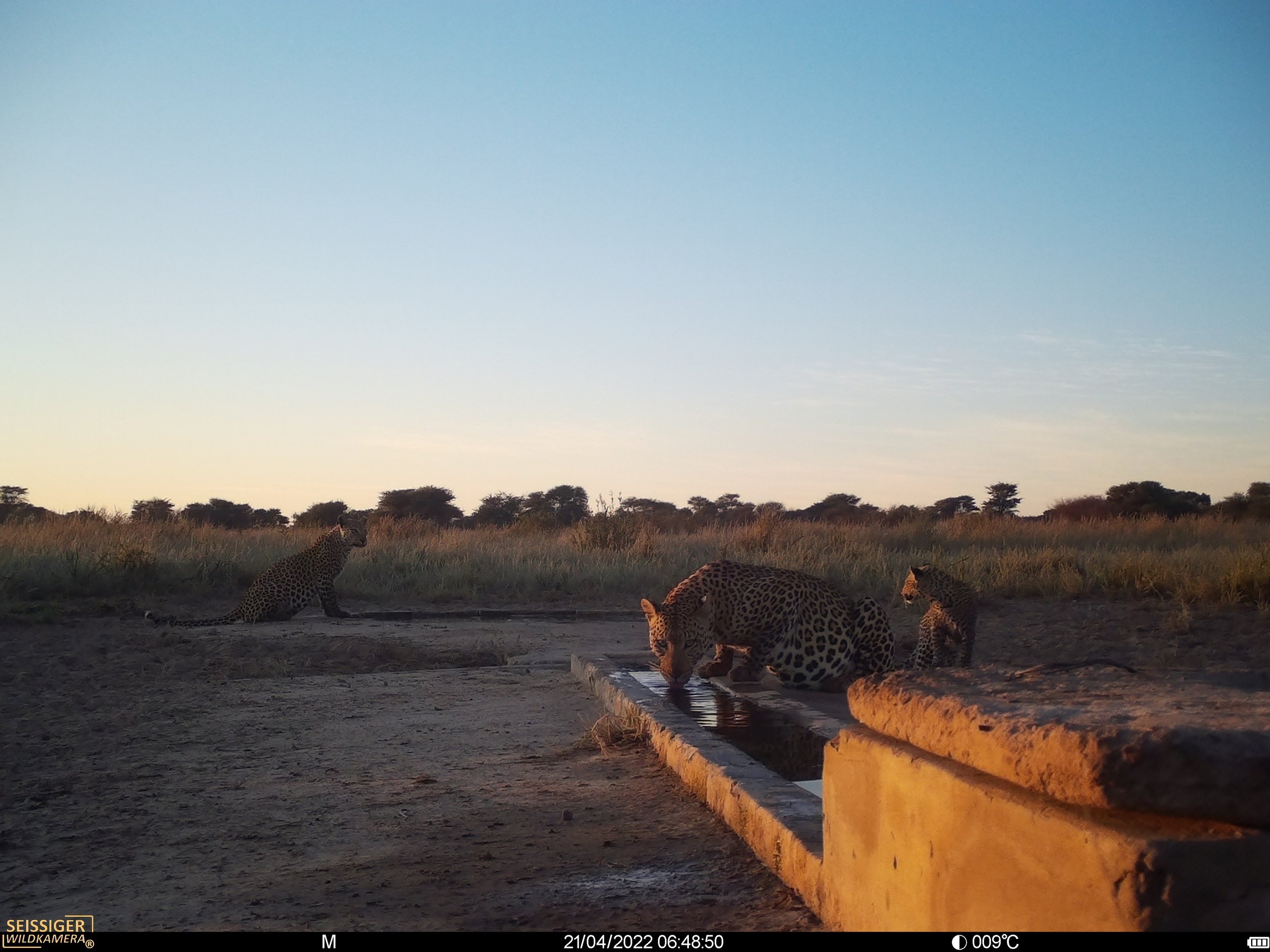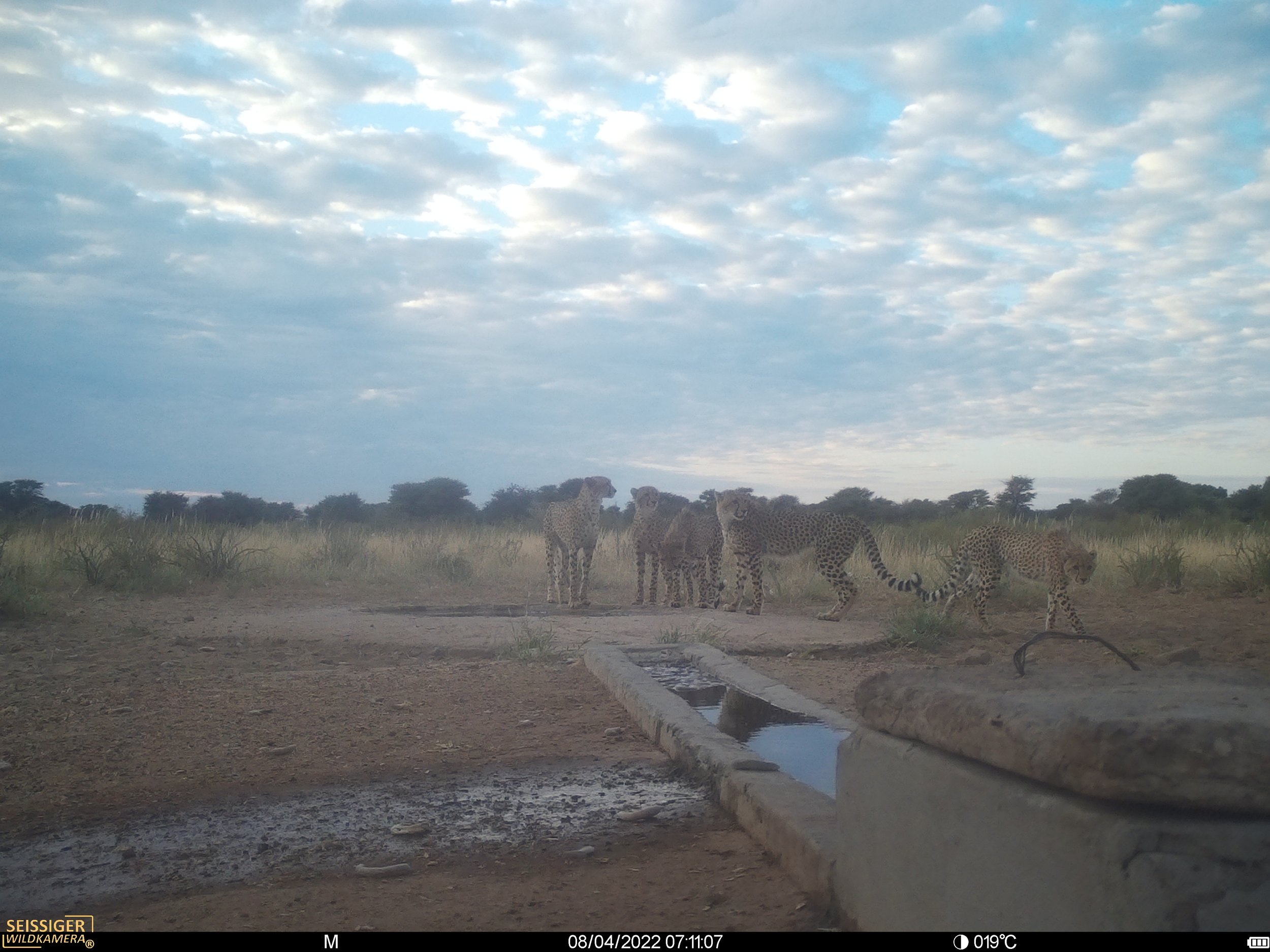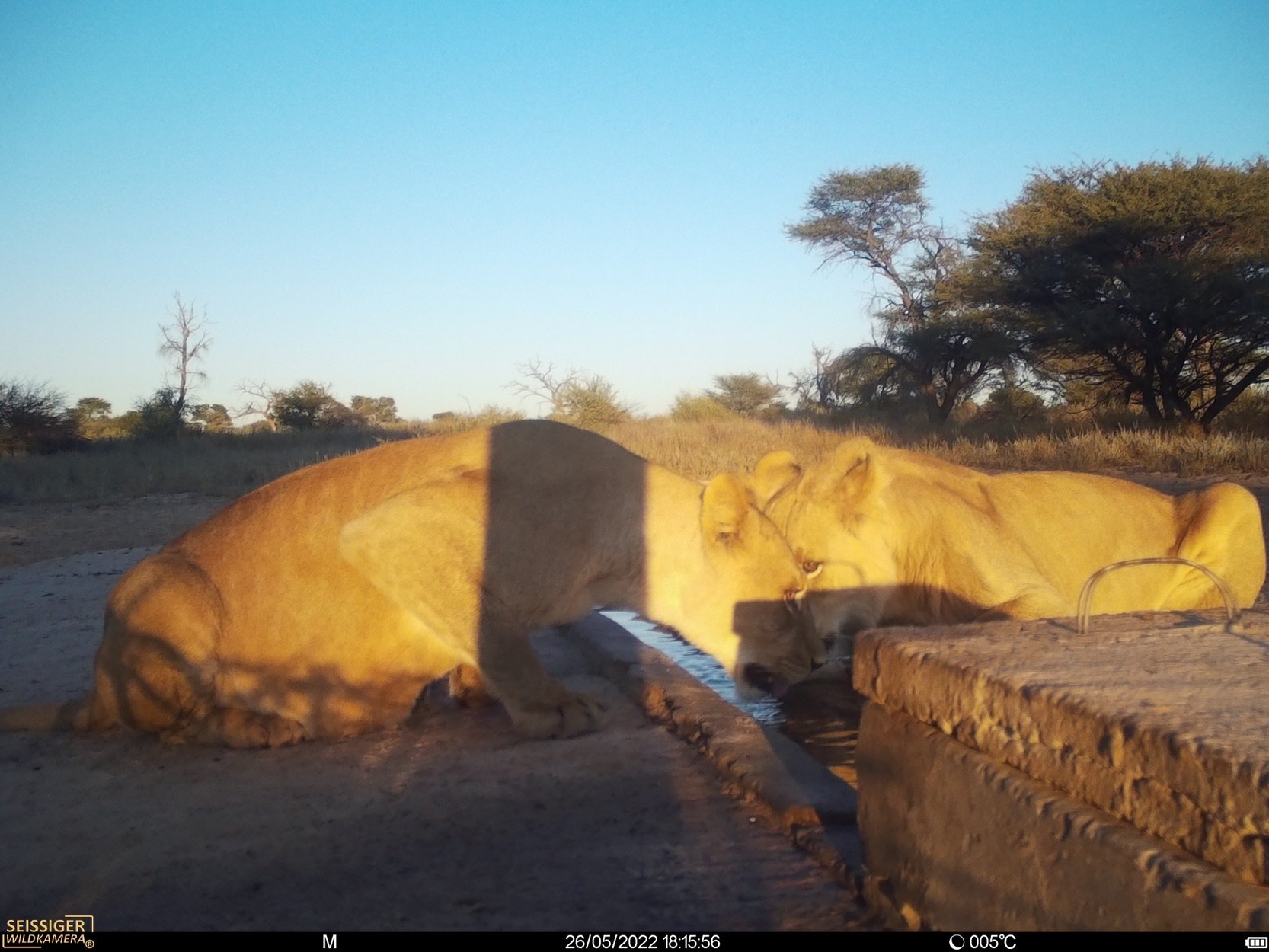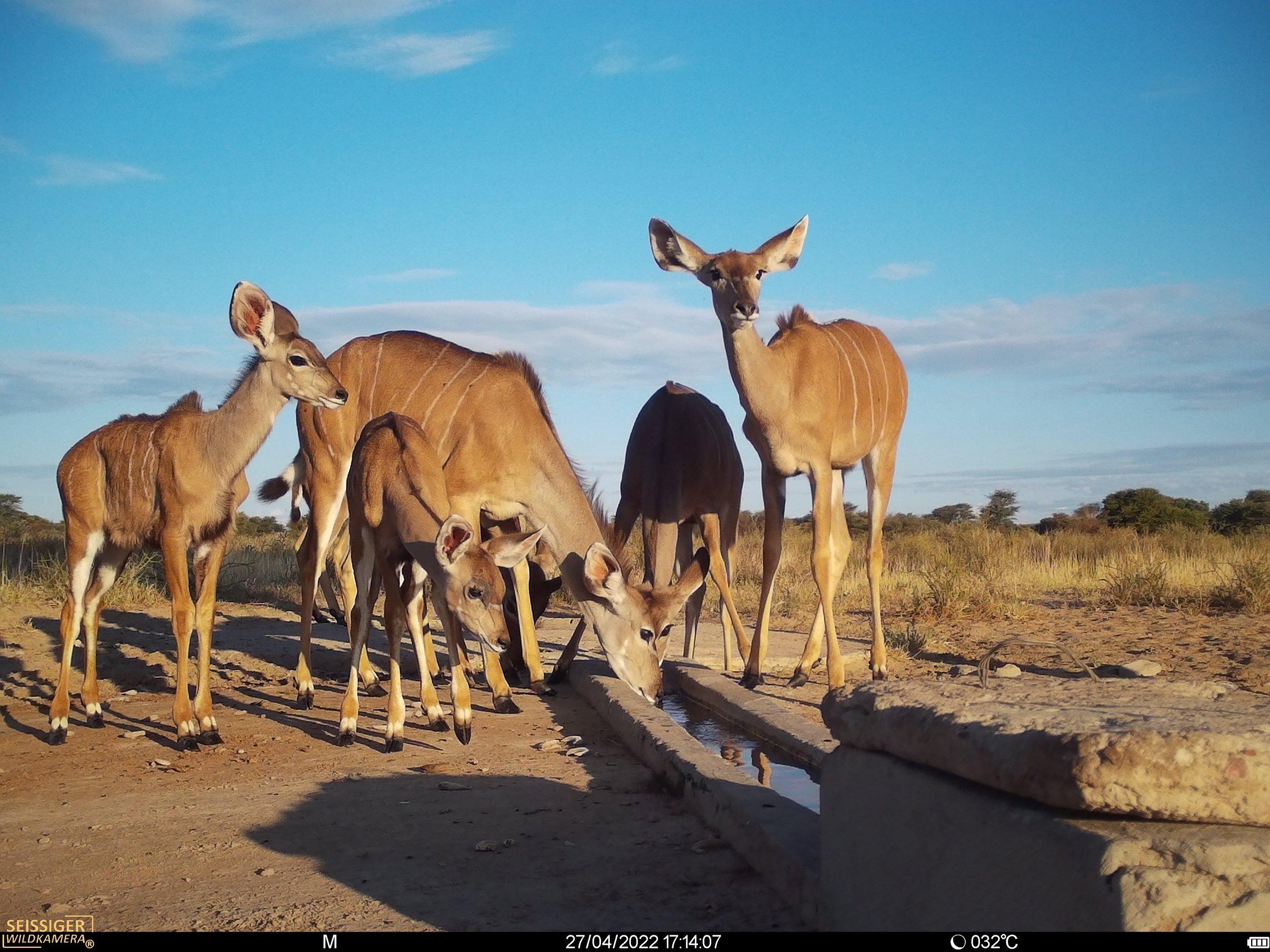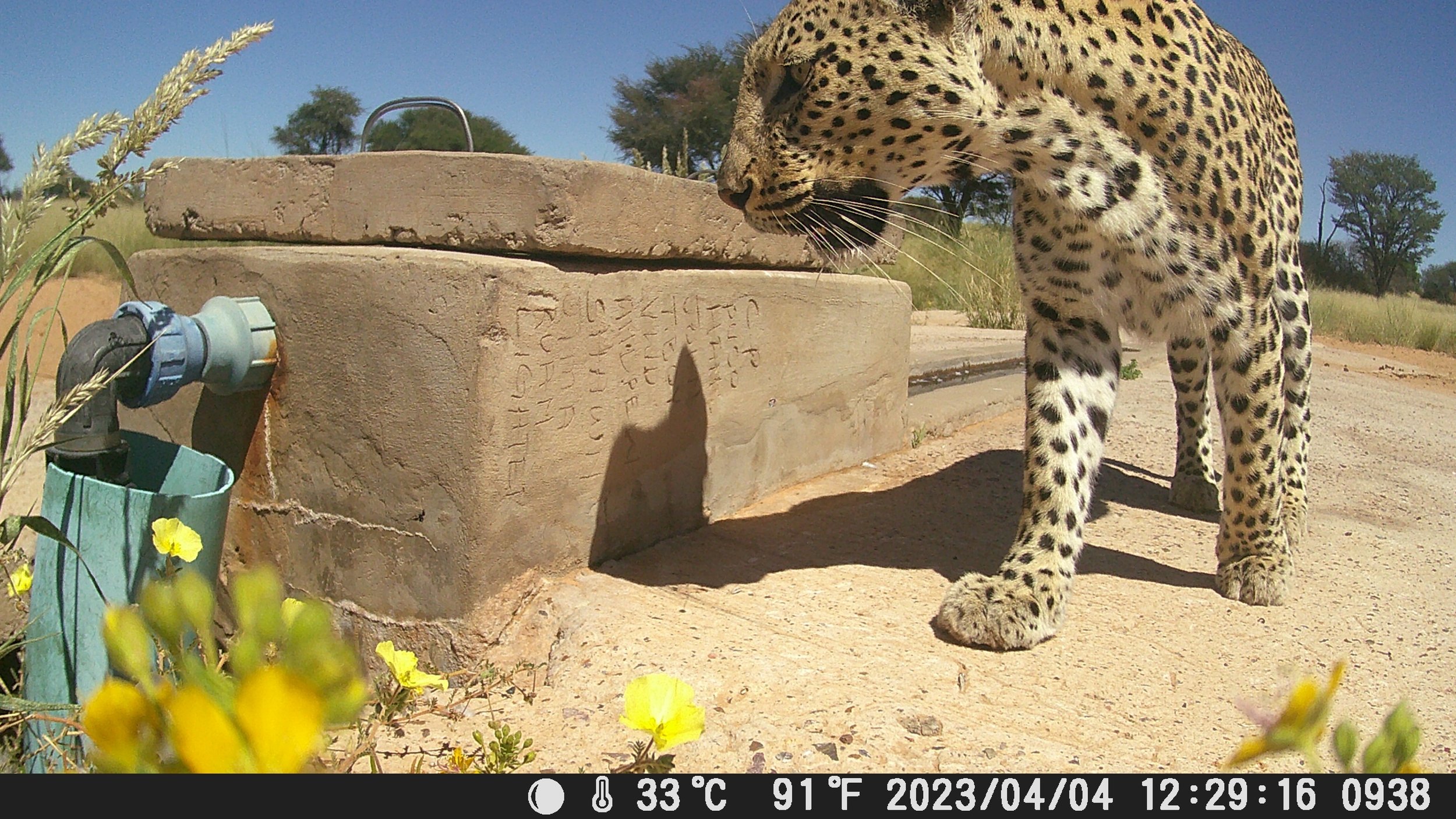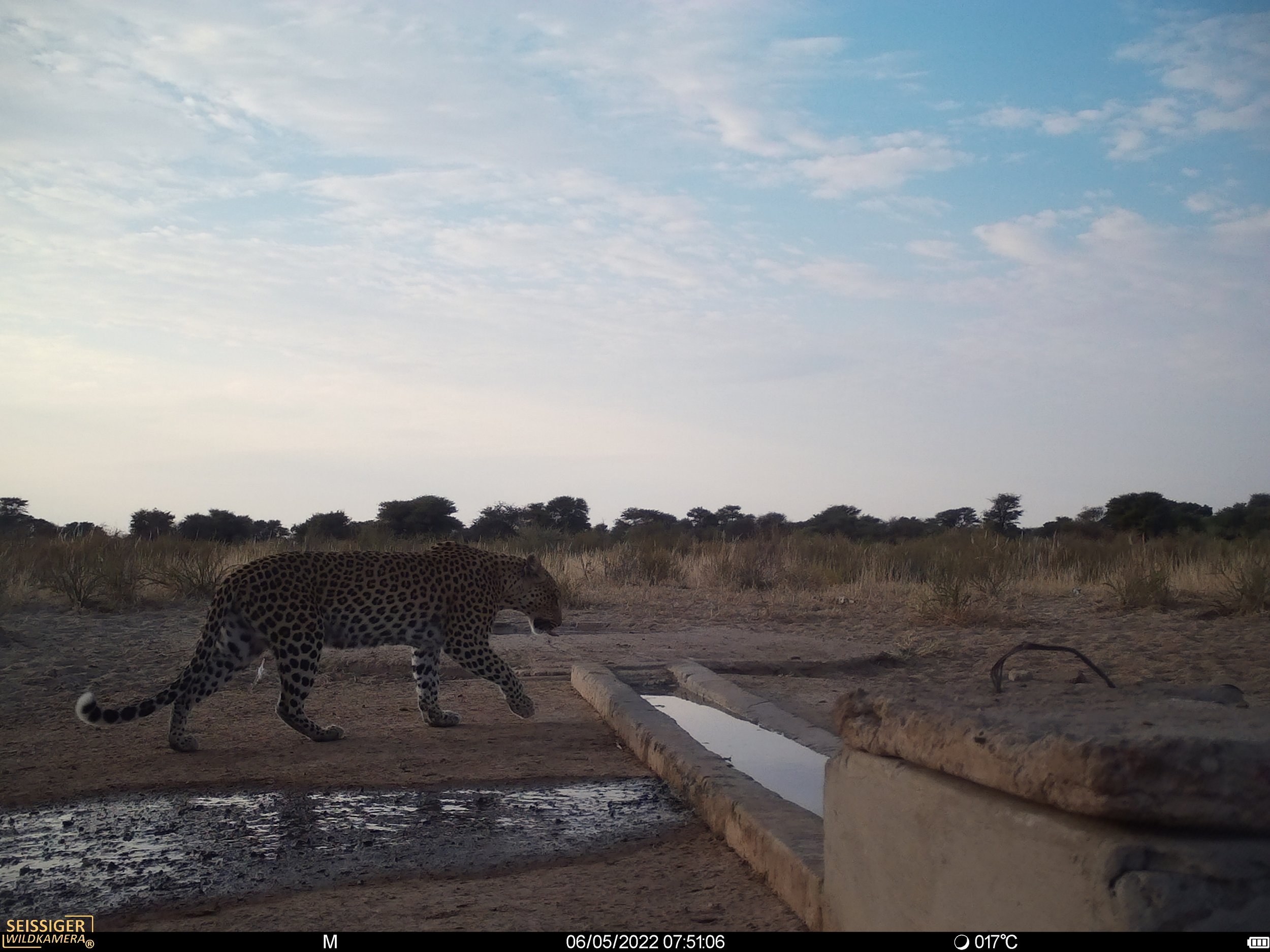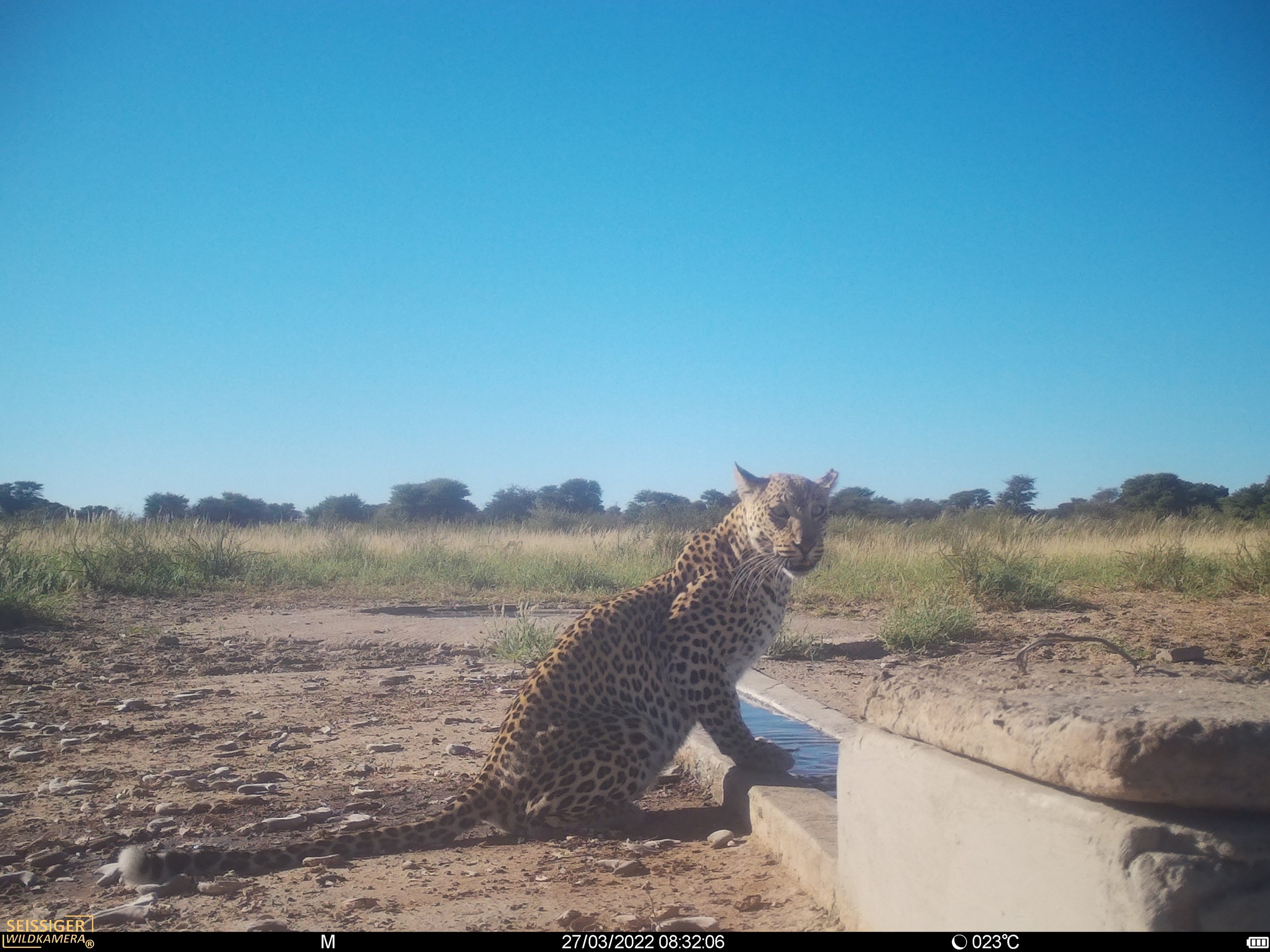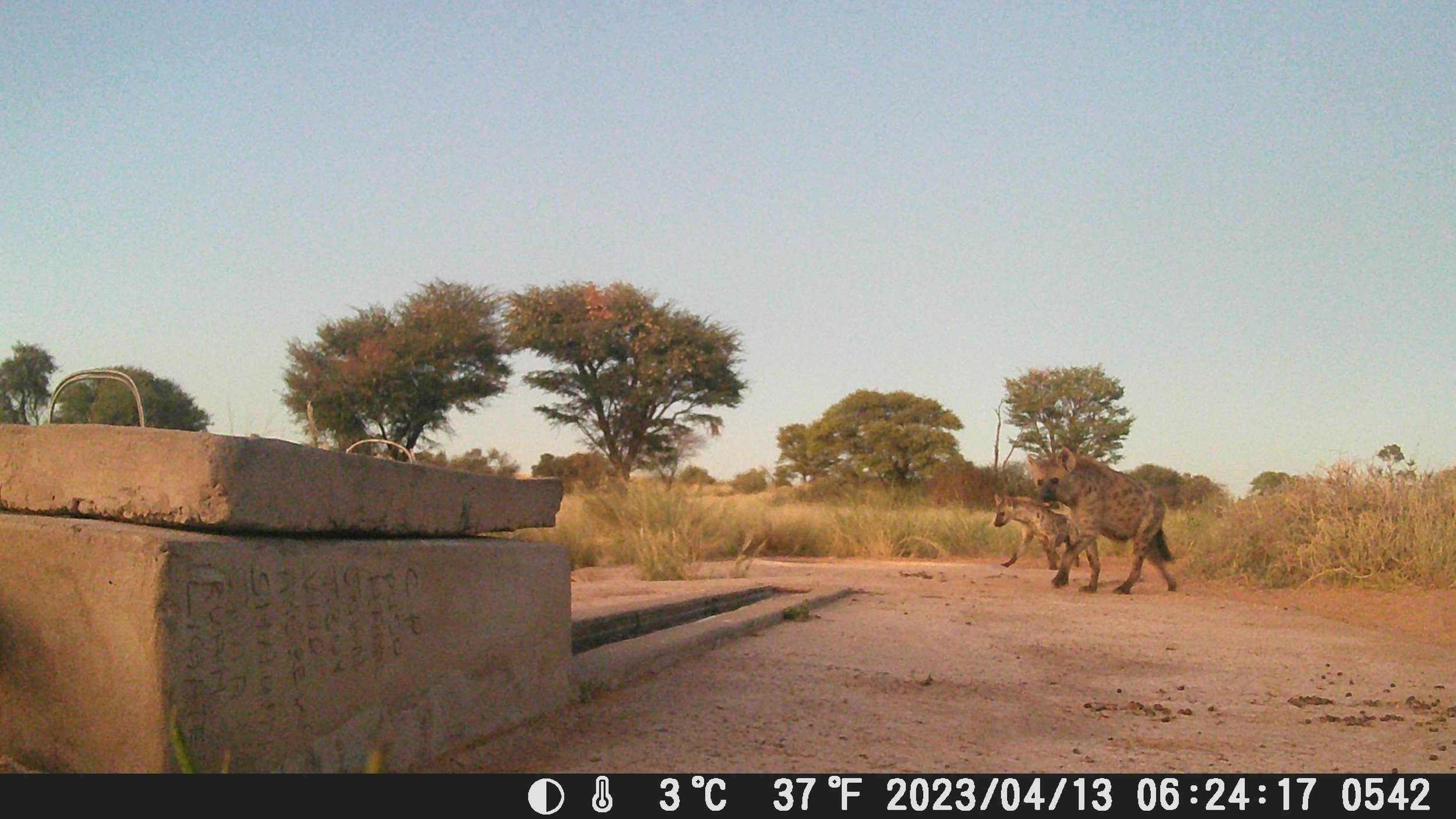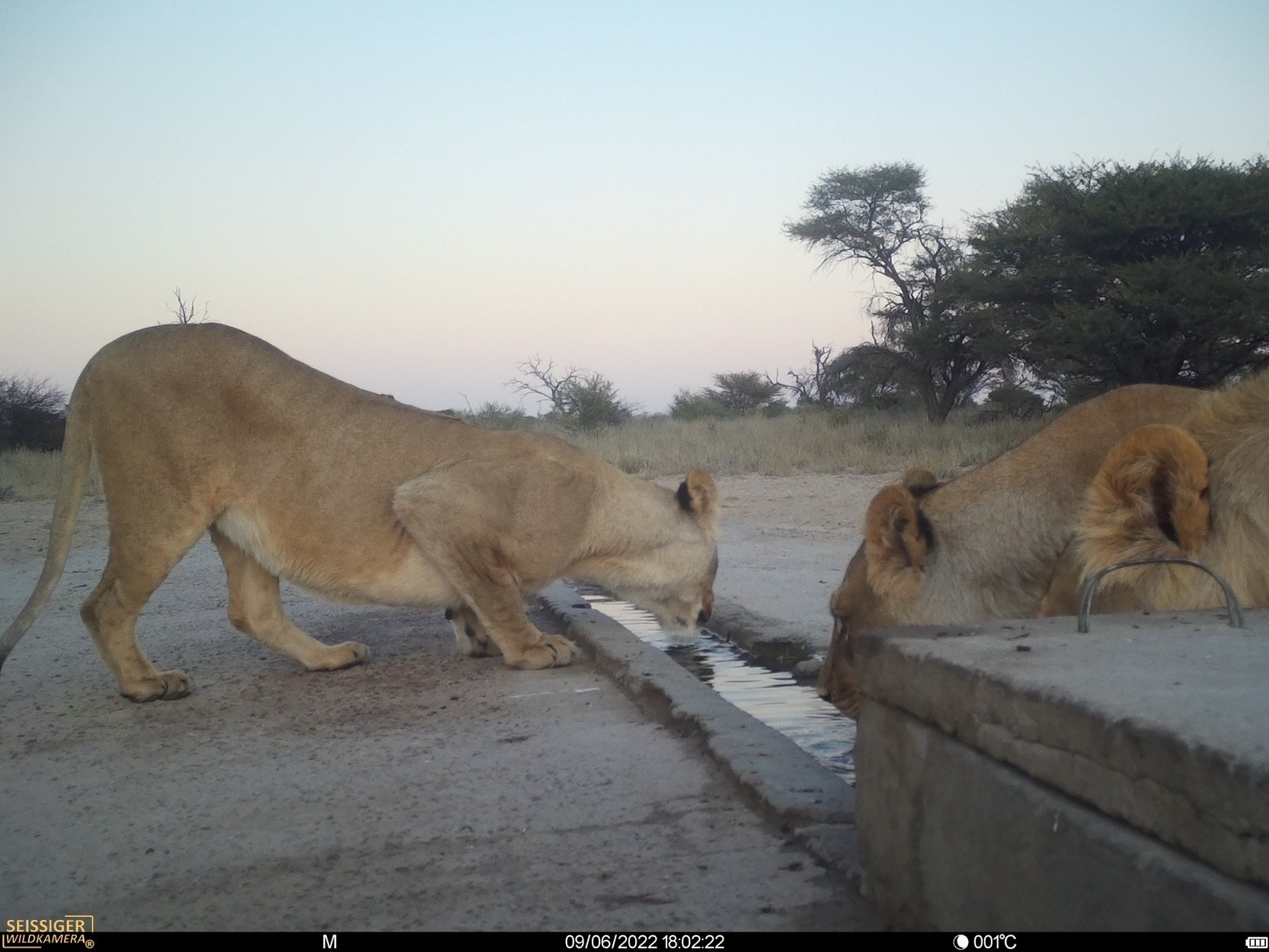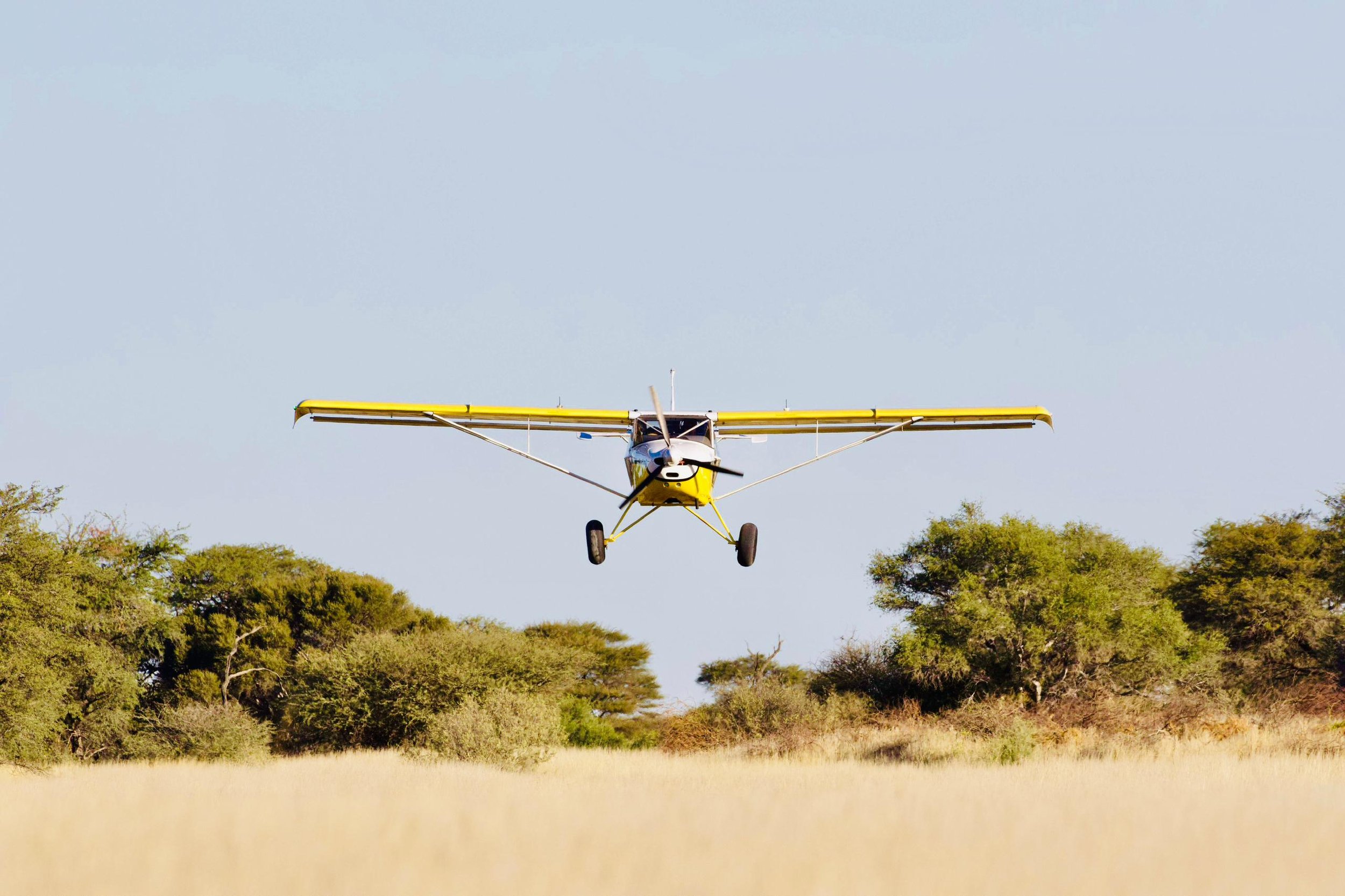

A Sustainable Future for the Kalahari
Working alongside the Khawa community and government partners, the Modisa Wildlife Project focuses on restoring the Kalahari's natural carrying capacity for wildlife. Historical data shows these protected areas once supported significantly larger herbivore populations, which in turn sustained healthy predator populations. Our restoration efforts aim to return ecosystems to these natural baselines while creating sustainable economic opportunities for local communities.
Our collaboration with the Department of Wildlife, University of Texas, and local authorities combines traditional ecological knowledge with modern conservation science. Through ground and aerial monitoring, we track wildlife populations and ecosystem health, while our permanent research station generates data that informs both local management decisions and broader Kalahari conservation strategies. Fire management represents a critical aspect of our work, protecting landscapes and wildlife while supporting natural regeneration cycles that local communities have understood for generations.
The Khawa community's trust in leasing us the KD-15 wildlife area demonstrates our commitment to community-led conservation. We provide technical capacity building while community members retain decision-making authority over their ancestral lands. Our guest program and research activities create direct employment opportunities, ensuring conservation generates sustainable livelihoods rather than displacing traditional practices.
Our operations model sustainable living practices including rainwater harvesting, small-scale farming, and beekeeping — techniques that complement rather than compete with traditional land use. Our guest program offers authentic conservation experiences that support both wildlife protection and community development. Through this partnership approach, we demonstrate that the Kalahari's wildlife recovery can drive economic prosperity for local communities while maintaining the ecological integrity that makes this landscape extraordinary.
Valentin Grüner, Founder and managing director


Vigilance from Land to Sky: The Anti-Poaching Initiative
Wildlife crime in the Kalahari is driven by complex economic pressures. Enforcement alone is not enough.
In partnership with the Department of Wildlife and the Anti-Poaching Unit, we provide monitoring and intelligence support across our area of operation. Our team includes local staff with deep knowledge of the terrain.
Ground patrols cover large areas to detect and report illegal activity. A bush plane provides aerial surveillance, allowing us to monitor remote regions and identify threats early. This setup ensures fast communication with authorities and coordinated responses.
All intelligence goes directly to law enforcement to support investigations and prosecutions.
Our main role is monitoring and reporting, but the work creates legitimate jobs in conservation for local communities with few economic options.
We believe effective wildlife protection must combine professional enforcement with economic alternatives. Our model supports both – helping prevent poaching while showing that conservation can create real livelihoods.
Our Commitment to a safe Haven for Wildlife
Our wildlife area supports diverse species that have evolved over millennia to thrive in the Kalahari's arid environment. The ecosystem maintains populations of large predators including lions, leopards, cheetahs, and hyenas, alongside smaller carnivores such as bat-eared foxes, honey badgers, and black-backed jackals.
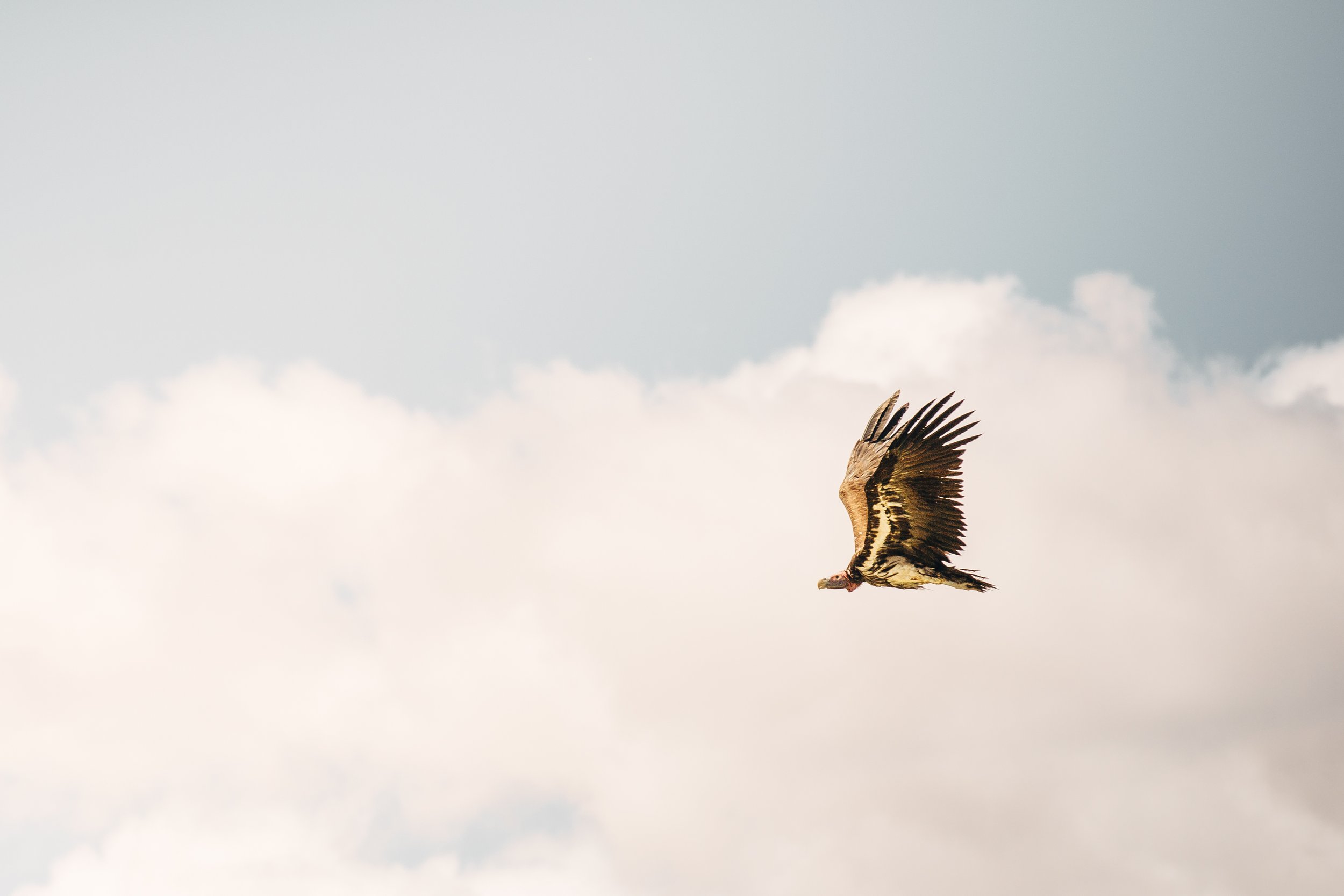

Our Commitment to Vulture Conservation
Vultures are vital for ecosystems, playing a unique role by scavenging carcasses and digesting diseases like botulism, cholera, anthrax, and rabies. Their clean-up ability is unmatched, with no other animal or human capable of replacing them. Unfortunately, vultures suffer from an undeserved bad reputation fuelled by media portrayals. Their protection has been neglected for a long time, despite scientists recognizing their crucial function.
Many vulture species worldwide are now threatened with extinction, but we proudly operate as one of Botswana’s vulture-safe zones under Raptors Botswana. We are fully committed to maintaining a poison and obstacle-free area, providing clean water for drinking and bathing, and actively monitoring nests and nesting success. Our presence of large predators and their leftovers create feeding opportunities for vultures. We also crush larger bones into small particles as a calcium source to support the development of young birds' bone structure, ensuring the future health of vulture populations. By joining our interactive guest program, you can directly contribute to vulture monitoring, bone crushing, and providing for these magnificent masters of the sky.


Nurturing Future Guardians: Our Engagement with Local Communities
Effective conservation builds on existing community knowledge and creates opportunities for young people to develop careers in wildlife management. Working with local schools, we support educational programs that combine traditional ecological knowledge with modern conservation science, recognizing that Kalahari communities have successfully coexisted with wildlife for generations.
Through collaborative workshops and field experiences, we work alongside educators to strengthen students' understanding of their local ecosystem while highlighting career opportunities in conservation, research, and sustainable tourism.
Our approach recognizes that conservation succeeds when it creates meaningful economic opportunities for local communities. By demonstrating how wildlife management, research, and tourism can provide sustainable livelihoods, we support the development of a new generation of conservationists who will lead ecosystem protection efforts rooted in both traditional knowledge and contemporary science.
The future of the Kalahari's wildlife depends on ensuring that conservation serves community development goals, creating pathways for young people to build careers protecting the landscapes their families have stewarded for centuries.
